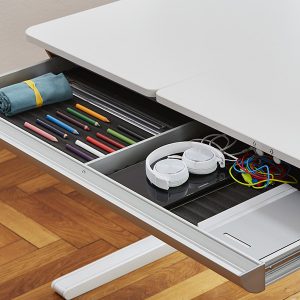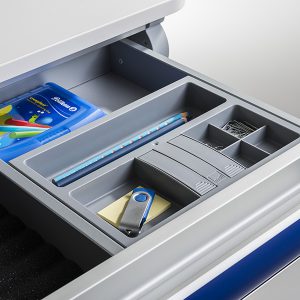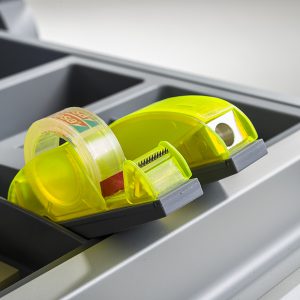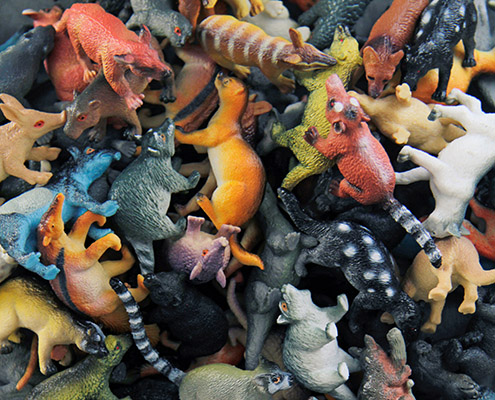Tidiness in children’s room and the exemplary behaviour of parents

Parents are the most important role model for their children. Right from the start, parents should set an example of the desired degree of order in their children. If parents clean up and put things back where they took them from every day, children learn from them by observing and imitating them.
When toys and the like are scattered all over the floor, pillows and blankets pile up, then for many children their room is in perfect order. Parents usually see things differently and wish for order-conscious children.
Tidying up is also made easier by appropriate children’s room furnishings. Well-organized shelves, children’s desks with drawers, clever organisation systems and sufficient storage space are prerequisites for a tidy children’s room. Parents should also not react too meticulously to pieces of Lego and piles of clothes lying around, so it remains fun for children to keep their room tidy. This promotes independent tidying up. At the age of five or six, children are already able to clean up their own room and maintain order.
In addition, parents should ensure that shelves and hook rails are installed at a height suitable for children and that all furniture is stable. The safety, health and quality aspects must also be taken into account when choosing the children’s room furnishings.
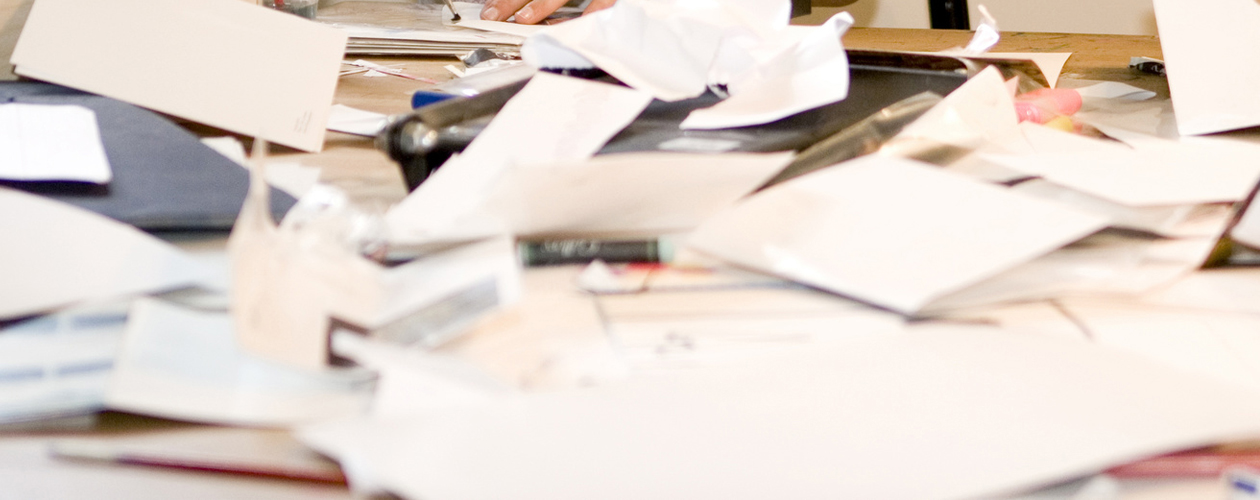
How can cleaning be learned?
Having children, who always tidy up their room is wishful thinking. Because no one is born with the desire to tidy up. Moreover, there is not ‘the one order’, says Ursula Kittner from Düsseldorf, who has made the topic of ordering and structuring her professional life.
“In the course of life you learn to develop your individual system of order. This may well differ from the systems of others – the main thing is that it serves its purpose. Ideally, parents do not force their own understanding of order on their children, but motivate them to find their own system that can be applied to all areas of life,” adds Ursula Kittner.
We have compiled tips on how parents can show their children that cleaning up can be fun:
- Support, explain and guide: A child has to learn how to tidy up and cannot do it at first without the help of the parents. It is not enough for parents to watch or say: “Now please clean up your children’s room”. Parents should demonstrate the individual steps, explain the procedure and encourage the child to participate. An attempt should be made to motivate the child, for example by saying: “Could you help me to put the toys into the box?” It’s much more fun together.
- Let them do it themselves – the child is already big: Once the children are around to clean up, then most likely with full euphoria. Then, children want to clean up by themselves. For a child, the greatest thing to do is to be able to do something on their own. It may take a little longer in the beginning, but from time to time the child will make changes here and then it will go a little faster. The child should be given time and patience
- Creative organization tools simplify the process of tidying up: The tidying up can begin with a tidying up song. One example of this is: “Cleaning up, cleaning up, playing is over. Come out of your corners, don’t hide. Clean up, clean up, play is over.” Boxes, boxes or drawers with pictures/photos of the respective contents are also suitable. In this way the child can orientate and knows what, how and where it belongs.
- Communicating clear rules: Parents should tell the child that the next game does not start until the old toy has been put away. The children keep the overview and are not overwhelmed.
- Remain consistent & withstand: The consequence towards the child is fundamentally important. Parents should be firm and should not do the cleaning themselves if the child does not comply with the cleaning request. If not tidied up, other games with not be played.
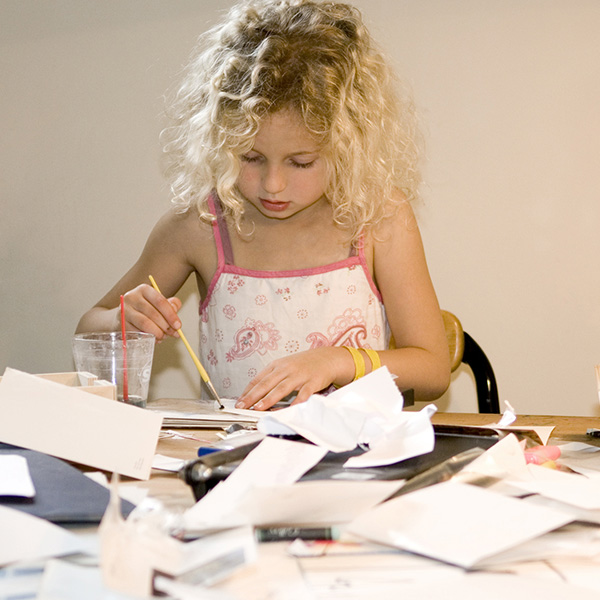
Cleaning up the first graders’ room
With increasing age of the child many parents hope that children will tidy up their room on their own. The balance between chaos and tidiness can also influence school grades. A large disorder in the room distracts and in the worst case even causes a restlessness in the head. A clearly arranged desk, on the other hand, invites for structured learning. With specific announcements as to when tidying up should be completed and which areas of the children’s room are meant, parents help their kids to restore order quickly and easily.
Why are tidiness and a good learning atmosphere so important?
For first graders, primary school students and adolescents, a tidy room is important in order to be able to do their homework with concentration and not be distracted. Whether changes to the room are easy to make also depends on the workplace and the possibilities it offers.
To create order for learning and working materials, space and storage space are needed above all. It is advantageous if it can be set up close to the learning place, i.e. at one’s own desk, as most of the material accumulates there.
Since chaos around the desk leads to distraction and searching around, moll has developed tables, accessories and add-on parts that are practical and ergonomic. The drawers of the moll children’s desks and containers are not simply empty, but can be equipped with compartments, dividers and the organisation sets. Sharpeners and adhesive tape dispensers are solidly integrated in it.
Why is learning at one’s own children’s desk so important?
In my opinion, there is no such thing as creative chaos in a positive sense – very few people can be creative out of chaos. You won’t get around to it: Too much distraction, too much is sought, thoughts cannot be sorted,” says Ursula Kittner, who has also experienced that creativity can best unfold when there is a certain amount of freedom for it and everything needed is well sorted within reach.
Order around the desk invites you to be creative and to learn. If there is not enough storage space at the desk, lateral extensions of the table tops, add-on parts or containers can help. Good and healthy learning is only possible when everything around and at the desk is tailored to the child.
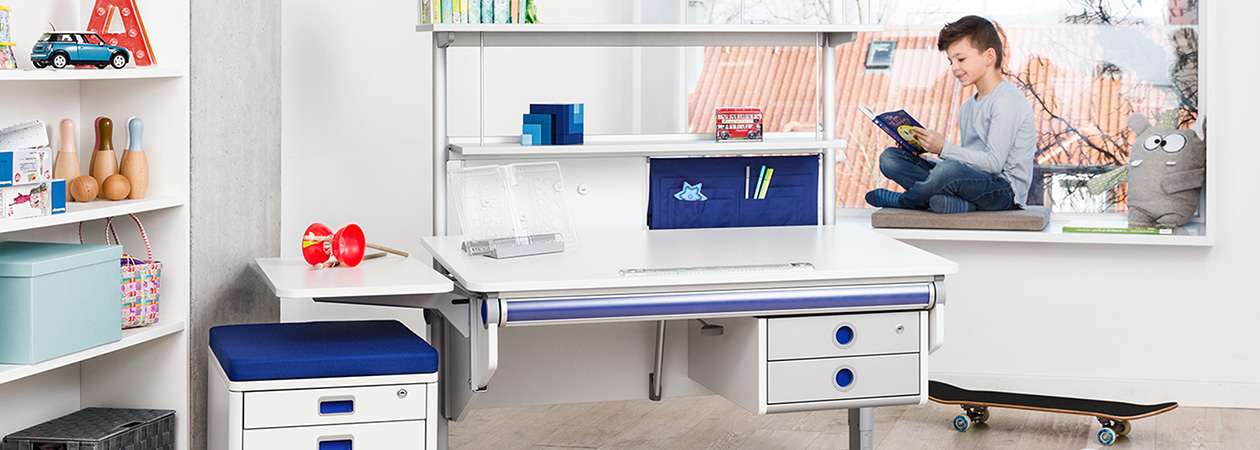
In this way, the work and learning materials should be in the right place. A schoolchild needs enough storage space at his or her desk for books and exercise books. Desk systems such as those from moll can be retrofitted or upgraded with suitable modules and thus create the necessary storage surfaces on the table. This works, for example, via extension plates that enlarge the work surface in all directions: to the left, right or to the rear. There are also shelves with shelf function that can be attached to the rear wall of the table – especially practical if there is no room on the side.
Containers or drawers with compartments separate folders, painting pads, pens and other small stuff. An additional container not only provides mobile storage space, but also an overview in the shelf. Because the interior is designed in such a way that both files and small utensils find their place in it.
Practical are also order assistants such as bookends, pencil holders and hooks on which the school bag can be hung. Cable ducts integrated into the desk protect PC users from cable clutter and tripping hazards. At moll children’s desks parents will find these and many other extras suitable for every table! Thus, the order around the desk is simply always maintained.
In our story “Chaos im Kinderzimmer” parents and children find an entertaining story about tidiness. With nice pictures and short texts, suggestions and valuable tips are given. The story can be found here!
Learn more tips on school enrolment from our guide for first graders …..
…. with tips for the time before school enrolment
Learn more tips on school enrolment from our guide for first graders …..
…. with tips for the time after the 1st day of school

